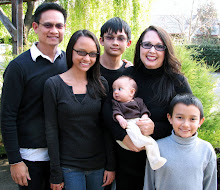for the seventh grade boy and girl
The following blog has content meant for parents and children 12 years of age and older. If you are younger than 12, do not read on without your parents' consent. (Of course, now that I said DO NOT READ ON, you might be tempted even more to do so...!)
My seventh grade physiology block at East Bay Waldorf in El Sobrante, CA, culminated in a week's discussion of puberty and human sexuality. I was so pleased with how well the students received the material that I am considering turning it into an ebook or a short published unit for Waldorf teachers!
Here are a few highlights of how the week unfolded.
Day One: Reproduction and Relationships
Humankind's experience of sexuality is truly of a dual nature. I pointed out to the students that the cycle of life has two complementary turning circles: reproduction and relationships, or biology and biography. And it starts with the duality of genes and jeans!
On the biological side, our genes, our DNA, are key to the passing on of the human design. On the biographical side, our jeans, which I used to represent the social aspect of ATTRACTION, are key to the turning on of human desire.
Attraction leads to HOPE. On the reproduction side is the male SPERM, and its complementary symbol on the relationship side is a STAR, which I used to represent the wish (wishing upon a star!) or hope for partnership, after attraction.
Hope leads to LOVE. The female EGG, the reproductive side, complements the EARTH, representing oneness, the love formed in partnerships.
Love leads to FAMILY. On the reproduction side, FERTILIZATION. The concept here is that our reproductive capacity to create Life is complemented by the relationships needed to nurture Life.
This dual concept of reproduction and relationship I believe is so important in laying the foundation for the seventh grader in making happy, healthy choices (which is the umbrella theme for the entire physio block). As they undergo puberty, knowing what is going on with their reproductive organs is obviously important. But at 12 and 13 years of age, even though they are capable of having children biologically-speaking, are they ready for the relationship side, for nurturing offspring? I made it clear that creating life is one miraculous human achievement, but nurturing life, having the maturity to be in a partnership with another human, to dedicate oneself to taking care of a child, requires many more years of growth. (My anti-teen pregnancy talk!)
Day Two: The Parts and Counterparts
The second day, I introduced the reproductive organs to the students. (A sidebar: as a teacher, I was sensitive to the delivery of the material. When we talked about digestion, I showed huge drawings on the board. With reproduction, I sensed that the material needed to be delivered on a more intimate scale, so our discussion occured in a small circle of chairs, with no board work. I instead made drawings on handouts.) I had the students make observations on the male and femal parts that I had drawn side by side, and they also labeled the parts. The students could easily see that parts had counterparts, such as with the male testes and female ovaries. I would point to the part and say it, such as PENIS, or VAGINA. Delivered in this way, they got used to hearing the words objectively, removing some of the giggle factor!
Day Three: Puberty and the Menstrual Cycle
The menstrual cycle allowed us to talk about female puberty. The signal for reproductive maturity in females is the period, along with other changes to the female body. In the 28-day cycle, we talked about the developing egg, the endometrium, and the hormones invovled.
I wrote a song (sung to Jingle Bells, since 'tis the season):
In the ovary,
The follicle does grow,
Inside there is an egg,
And soon it will explode.
If unfertilized it stays,
The egg it travels on,
Through the tube and uterus,
And with the blood it's gone!
Ohh,
FSH, estrogen, LH, progesterone,
FSH, estrogen, LH, progesterone,
FSH, estrogen, LH, progesterone,
FSH, estrogen, LH, progesterone!
Day Four: Puberty and Spermatogenesis
Our circle of chairs became the lining of the testes. Using bean bags, I described the maturation of the sperm as it traveled from the edges to the center on the testes to become mature sperm. Spermatogonia to spermatocyctes to spermatids to spermatozoa. They then moved to the epididymis for storage, and mixed with seminal fluid from the glands and prostate, and ejaculated upon stimulation of the penis.
If you are wondering, the mechanism of bringing egg and sperm together was in fact briefly discussed. I simply said that the act of intercourse, when the male penis is erect and stimulated, releases the seminal fluid into the vagina where the sperm, all 500 million of them, needs to travel to the Fallopian tubes, and just ONE sperm fertilizes the egg, quite a journey!
The Guy Talk
On the fourth day, we had a break out session, I spoke with the boys, and Mrs. Nelson, my partner teacher, spoke with the girls. I was really impressed that the boys were very open and candid with the guy topics!
The week went very well, and I was glad to have been involved with this crucial stage in the lives of these dear children.
Saturday, December 19, 2009
Subscribe to:
Post Comments (Atom)




1 comment:
This is fabulous! As a home educator and having to work on this block this year, 2011, I greatly appreciate the insight.
Thanks
Post a Comment